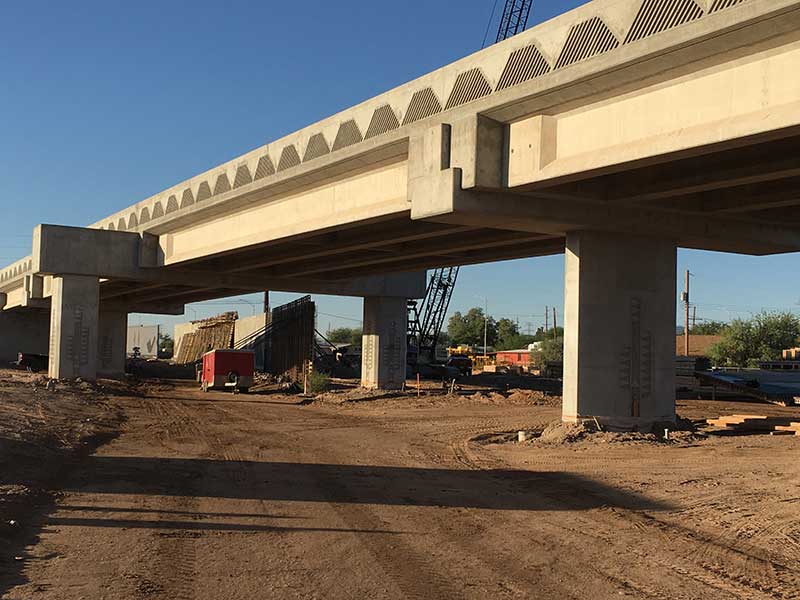Coming soon to I-19 Tucson: the braided ramp
Coming soon to I-19 Tucson: the braided ramp

How did the freeway cross the road?
It sounds too simple. Every time a freeway crosses a major street there’s an interchange. For years, engineers have chosen from two primary designs: a diamond interchange with four on- and off-ramps connecting the freeway with the street, and a cloverleaf that uses a combination of long straight ramps and four circular ramps that look a little like a four-leaf clover.
If only life were that simple.
The options for engineers today are endless. Some of the options are already in use or planned in Arizona. There’s the Single Point Urban Interchange, like the one was just constructed on Interstate 19 and Ajo Way, where all ramps come to a single point and are controlled by a single traffic signal. A diverging diamond design, which is planned for Happy Valley and I-17 in Phoenix, two South Mountain Freeway interchanges and Houghton and I-10 in Tucson, eliminates left turns across traffic by having drivers make a temporary shift to the left side while crossing the freeway.
Ramps themselves can add another twist. For the southbound on-ramp at Ajo Way and I-19, our engineers wanted to make it easier for drivers to merge while getting on or off I-19.
Introducing a braided ramp.
To prevent drivers getting on and off the freeway from having to maneuver around each other, in a braided configuration one ramp is elevated, passing over the other ramp.
At Ajo Way and I-19, the southbound on-ramp will pass over the top of the Irvington Road exit ramp. It looks a little like braided hair. You can see a demonstration of how a braided ramp works in the video above, which was made by the city of Round Rock, Texas.
The drivers never cross paths, enhancing safety.
